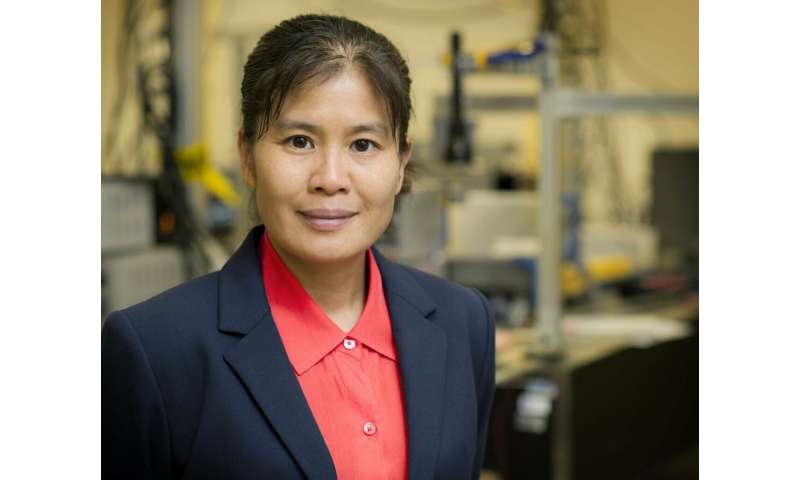UTA researcher earns grants to control ultrasound waves for detecting structural damage

Haiying Huang, a professor of mechanical and aerospace engineering at The University of Texas at Arlington, has earned a pair of grants worth nearly $900,000 to monitor structural health and detect when and where damage happens.
Using a $599,928 grant from the Department of Defense, Huang will attempt to design ultrasound transducers, devices that convert mechanical vibrations to electrical signals or vice versa, that can be glued to ships' hulls to detect and monitor material degradation that causes corrosions on high-strength ship-building materials.
These material degradations are microscale in size and usually cover the entire surface of the hull. If they are not treated, they can cause the alloys to break down and impact the ship's seaworthiness. Huang's research will focus on degradations that are early in their development, when they are so small that they are undetectable by current sensors.
"This type of technology goes beyond normal maintenance for a ship. It captures valuable data about the material state before it becomes a much larger problem. By detecting them earlier, we're hoping it can drastically reduce the maintenance costs in the long run," Huang said.
Huang will establish new simulation and experiment techniques to determine the effects of adhesives on the transducers, as well as the effects of material degradation on the signals. She also plans to develop new transducer designs and control strategies for better detection and characterization of material degradation that could help the Navy with maintenance, operation and safety on its ships.
Huang will use a three-year, $299,973 grant from the Office of Naval Research to investigate the use of optical fibers as ultrasound waveguides to create sensor networks that can be implemented to detect when and where damage occurs within a structure.
These networks could be key components for structural health monitoring, the process of continuously checking the condition of components of buildings, ships and other structures in real time.
"Structural health monitoring is a growing technology because of its potential to provide substantial benefits in safety, operational costs and design. We are working to create networks that would allow remote monitoring or make it possible for a few sensors to monitor a very large area, which would speed detection before issues become dangerous," Huang said.
Most ultrasound sensing is conducted with transducers that require electric wiring. However, wired transducers add a great deal of weight to a structure and are difficult to maintain, especially on a ship that is exposed to sea water.
Huang will attempt to investigate wave coupling, or the transmission of ultrasound waves, between two waveguides to create optical fiber-based ultrasound sensor networks that could be configured to detect certain types of waves. These networks would be lightweight, effective and easy to maintain.
Waveguides such as optical fibers can be used to move waves in a prescribed way. They can pick up ultrasound waves along the way and deliver them to a remotely located ultrasound sensor.
"The idea is similar to how a spider finds prey on its web," Huang said. "When the prey struggles, it sends vibrations down the strands of web, alerting the spider that the prey is there and its location.
"When a crack happens in a structure, it generates a wave. The ultrasound sensors would detect that wave and pinpoint it based on the dissonance between waveguides."
Huang's work with ultrasound transducers and waveguides is an example of research in the area of data-driven discovery, one of four themes of UTA's Strategic Plan 2020, said Erian Armanios, chair of the Mechanical and Aerospace Engineering Department.
"Achieving real-time information on the health of naval and aerospace structures is key to improved safety and performance. Dr. Huang's development of ultrasound transducers reflects her pioneering research in addressing timely challenges in corrosion mitigation and condition-based maintenance for the Navy fleet," Armanios said.
Provided by University of Texas at Arlington